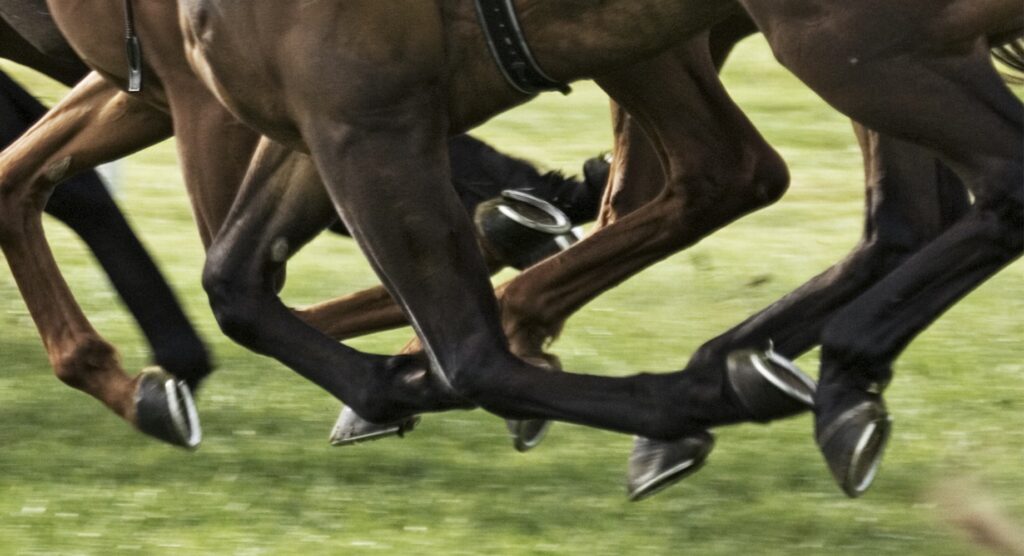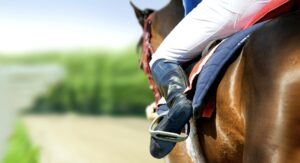Trading In Running on Horse Racing
Betting in running on horse racing can offer a plethora of opportunities for gamblers to profit. Some like to simply back a horse when they think it is travelling well, or lay one when they don’t think it can win. Others prefer to take a different approach, trying to make money from the odds movements in a horse during the course of a race. This is known as trading and enables customers to profit regardless of the result of a race.
In Running Approaches
Many serious exchange players make a very good income from trading the horse racing markets, both pre-race and live, and in this article we take a look at the main two strategies that are adopt to ‘green up’ and lock in a profit whilst a race is being run.
There are two main approaches that are used:
- Back to in running laying
- Lay to in running backing
It is important to identify the benefits and potential drawbacks of both of these approaches and appreciate the mechanics behind the trades. Firstly we take a look at back to in running laying.
Back to In Running Laying
This method of betting in running on horse racing is perhaps best suited to front runners. It can also be utilized with strong travelling horses and those who display quirks in their attitude. The premise here is to back the horse pre-race, or in the contest, with the intention of laying off the bet at a later stage in the race to guarantee a profit regardless of the result.
With front runners, the aim is to find a contest where the horse in question has little competition for the lead and the other factors are favourable. Being allowed an uncontested lead should enable the horse to show up well for a long way in the contest (and thus trade lower) regardless of whether they are victorious.
Back to In Running Laying Example
Horse X is racing over 7f at Wolverhampton from stall 3. He is the only confirmed front runner in the field and research has indicated stall 3 is a positive.
Horse X has been unplaced in his last two starts, but they were over 6f (not his optimal trip) and he faced competition for the lead. Based on recent form, the horse is priced up at odds of 10.00 on most betting sites.
After analysing the race, we believe the conditions are conducive to Horse X putting up a good showing for a long way in the race and believe that the horse will trade much shorter than 10.00 on offer. We place the following bets:
- Pre-race: Back Horse X pre-race for £100 at odds of 10.00. Potential returns are £1000 (less commission)
- During the race: Lay Horse X for £200 at odds of 5.00. Potential pay-out is £800 (4 x £200 stake)
If the horse wins:
Back profit = (9 x £100) £900
Lay liability = (4 x £200) -£800
Profit = £100
If the horse loses:
Lay profit = (1 x £200) £200
Back loss = (1 x £100) -£100
Profit = £100
Assuming that the horse hits the desired odds of 5.00 in running, regardless of whether it wins or loses, £100 profit is guaranteed. The risk on this bet is £100, so essentially by trading out at 5.00 in running, we are securing an even money winner.
The obvious drawback with back to in running laying is that the horse may not hit the odds at which the bettor has put the in running lay up at. However, all that is being risked here is the stake and this method of trading provides an opportunity to profit from horses who does not win very often but regularly trade short in running.

Lay to In Running Backing
In running betting can be attacked from the opposite angle. Laying horses pre-race with the intention of backing them in running is a strategy that is generally most effective with horses that are held up, or renowned for needing significant encouragement from their jockey to put their best foot forward.
Horses that are likely to come from off the pace or take plenty of encouragement from the saddle often trade bigger in running before finishing well. By laying the horse pre-race and then backing at bigger odds in running, again a guaranteed profit can be achieved through the trade.
Lay to In Running Backing Example
Horse Y is a hold up performer and is racing from stall 8 in a 15 runner handicap at Newcastle over 7f. There appears to be a lot of pace in the race, with at least three front runners. Horse Y’s ideal trip probably lies at around 8f, but he should be able to get away with the straight 7f at Newcastle as it is a fair test.
The draw is reasonable as the horse has the option of tracking the pace, and we deduce that with the presence of a number of early speed horses, the race will be run at a fast tempo. The horse has some solid recent placed form over 8f on slightly tighter tracks and so is available at odds of 6.00 on most sites.
As a hold up performer, whose best trip is probably a little further, we predict that Horse Y will be a little run off its feet early in the contest and outpaced, before stamina kicks in late and the horse stays on strongly.
This horse looks like a perfect lay to in running back. We do the following, with both bets placed pre-race, but with the back bet set to be activated in running.
- Lay Horse Y for £300 at 6.00. This bet will be matched prior to the race commencing, and will leave us with a liability of -£1500.
- Back Horse Y for £200 at 9.00. This bet will also be struck pre-race, but will not be matched. There is a function on certain bookie sites called ‘keep in play’ which allows the bet at 9.00 to stand once the race is underway.
If the horse loses:
Lay profit = (1 x £300) £300
Back loss = (1 x £200) -£200
Profit = £100
If the horse wins:
Back profit = (8 x £200) £1600
Lay liability = (5 x £300) -£1500
Profit = £100
Laying Horse Y and then backing it 3 points bigger and scalping a profit of £100 is the aim and we are very confident that the horse will be trading bigger in running from an early stage.
We can now analyse two potential scenarios that will affect how we play the trade:
In this case, there are two options:
- Wait as the race develops. The slow early pace will not be to the advantage of Horse Y as he requires a stamina test and is likely to be outpaced if it turns into a sprint and the horse will hit its reacquired odds for the trade to be matched.
- Take evasive action. As the horse has not hit the required odds early as expected, the cautious approach could be to exit the trade, by backing the horse at 6.00 for £300, leaving a level return. Worst case scenario and the horse is trading below the 6.00 you laid it for, you can take a small loss. For instance, by putting in a back of £133.33 at 4.50, a loss of around £33.33 can be forsaken to exit the trade.
If trading is a completely new concept, then this can seem a bit complicated and overwhelming.
Setting a point in the race at which you want to exit the trade is a safe way to start out.
Lay to in running back bets should always be struck in competitive races where there is a large field. This way, if the trade is not filled early, the odds of the horse should not decrease too much and it should be possible to exit without much damage as there will still be many horses in contention half way through the contest. Avoid laying to in running backing when the race has lots of dead wood in it.
For instance if laying to in running backing a second favourite in a race with an odds on favourite, if that fancied horse unseats the rider or starts very slowly, then the odds of the second favourite will collapse and the loss on the trade may be substantial.
Remember…
It is vital to play around with very small stakes to get comfortable with trading. Backing to in running laying is safer for beginners and if deciding to lay to in running back, a good quality internet connection is vital as if it goes down, the exposure on the lay bets can be large.
The types of horses that make great trades can be found in The Types Of Horse To Bet In-Running article.




